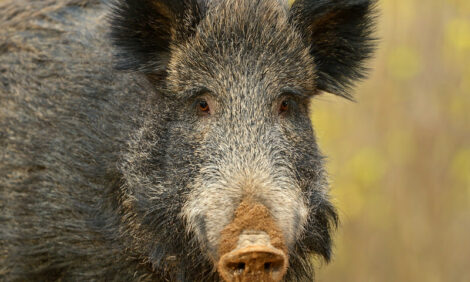



Korean Chefs Shown Winning Ways with US Pork
US - As part of its efforts to protect and grow the US majority share of the imported pork market in South Korea, the Meat Export Federation (USMEF) organised a project to promote US meat to barbecue restaurant owners, chefs and staff.
USMEF says that South Korea's food service sector needs better knowledge on how to effectively utilize US pork and confidently sell it to customers.
The federation held a US pork education program and sales competition during October that included 41 Korean barbecue restaurants and two US pork distributors who supply product to large barbecue restaurants.
The program started with a session on taste, quality and profitability. Participants sampled promotional cuts of pork belly, collar butt and spare ribs and received comprehensive information and materials to study and use in their business. A subsequent sales competition was also used to encourage the restaurants to use and promote these cuts. The winners were selected on the percentage increase in volume of US pork sold at their premises during October.
“This competition was effective in gaining restaurant staff interest and participation in learning about US pork and using that information to market US pork dishes to end consumers,” said USMEF Korea Director Jihae Yang. “USMEF succeeded in helping participating restaurants use US pork as a core item through education, one-on-one meetings and promotional support.”
USMEF rewarded six chefs four: from the Tosung restaurant chain, who increased sales by 131 percent; two from Meat Masters who pushed volume up by 20 percent in October compared to September. They will visit Hong Kong to learn how US pork is used in restaurants there.
Export asset
Korea is the fifth largest export market for US pork and pork variety meat through September 2007, with a volume of 67,504 metric tons valued at $162.6 million, a 7 percent increase from the same period last year.
USMEF sees its promotional efforts as a good way to enhance USDA's country-of-origin labeling (COOL) policy overseas. Its presence in the Korean pork market is important to meat exporters since the country imports pork from more than 20 countries. Currently, the COOL policy applies to beef restaurants, but it is expected to be tolled out to pork restaurants in the future.
Unfortunately, Korean restauranteurs have been reluctant to declare the origin of their pork supplies unless it is Korean. Customers have a strong loyalty to domestic products. However, following the competition, USMEF reports that restaurants are more willing to identify US pork to consumers since they understand its positive attributes and feel confident selling it.
The federation held a US pork education program and sales competition during October that included 41 Korean barbecue restaurants and two US pork distributors who supply product to large barbecue restaurants.
The program started with a session on taste, quality and profitability. Participants sampled promotional cuts of pork belly, collar butt and spare ribs and received comprehensive information and materials to study and use in their business. A subsequent sales competition was also used to encourage the restaurants to use and promote these cuts. The winners were selected on the percentage increase in volume of US pork sold at their premises during October.
“This competition was effective in gaining restaurant staff interest and participation in learning about US pork and using that information to market US pork dishes to end consumers,” said USMEF Korea Director Jihae Yang. “USMEF succeeded in helping participating restaurants use US pork as a core item through education, one-on-one meetings and promotional support.”
USMEF rewarded six chefs four: from the Tosung restaurant chain, who increased sales by 131 percent; two from Meat Masters who pushed volume up by 20 percent in October compared to September. They will visit Hong Kong to learn how US pork is used in restaurants there.
Export asset
Korea is the fifth largest export market for US pork and pork variety meat through September 2007, with a volume of 67,504 metric tons valued at $162.6 million, a 7 percent increase from the same period last year.
USMEF sees its promotional efforts as a good way to enhance USDA's country-of-origin labeling (COOL) policy overseas. Its presence in the Korean pork market is important to meat exporters since the country imports pork from more than 20 countries. Currently, the COOL policy applies to beef restaurants, but it is expected to be tolled out to pork restaurants in the future.
Unfortunately, Korean restauranteurs have been reluctant to declare the origin of their pork supplies unless it is Korean. Customers have a strong loyalty to domestic products. However, following the competition, USMEF reports that restaurants are more willing to identify US pork to consumers since they understand its positive attributes and feel confident selling it.








